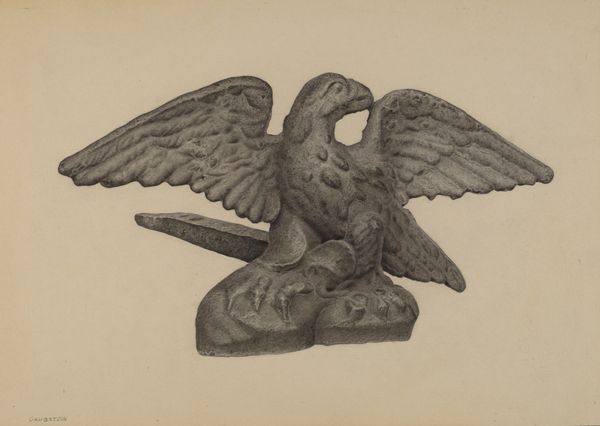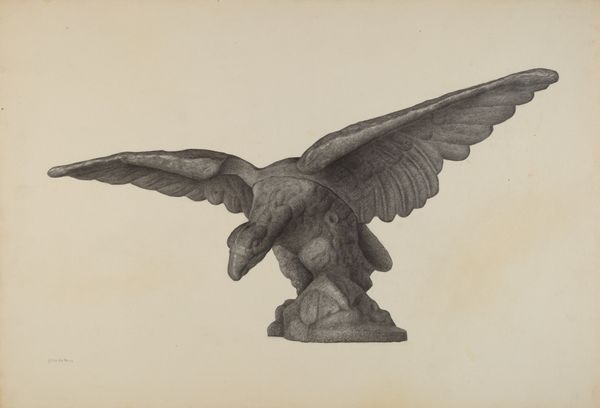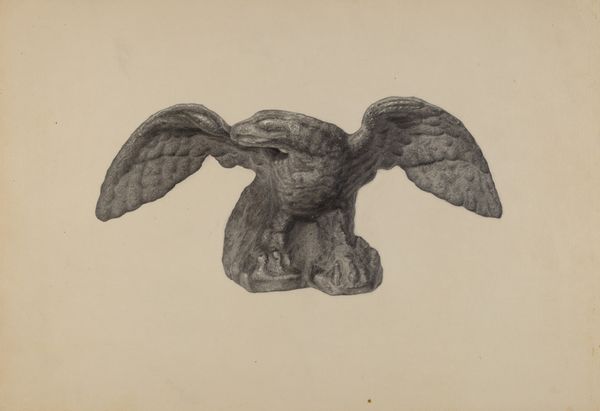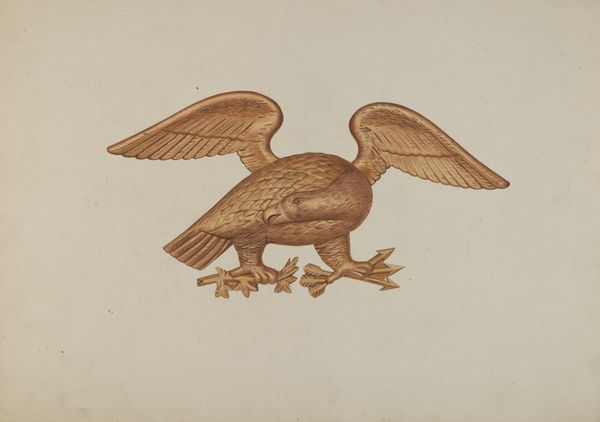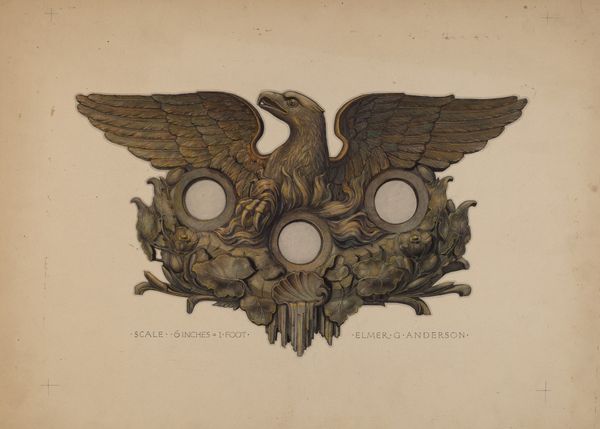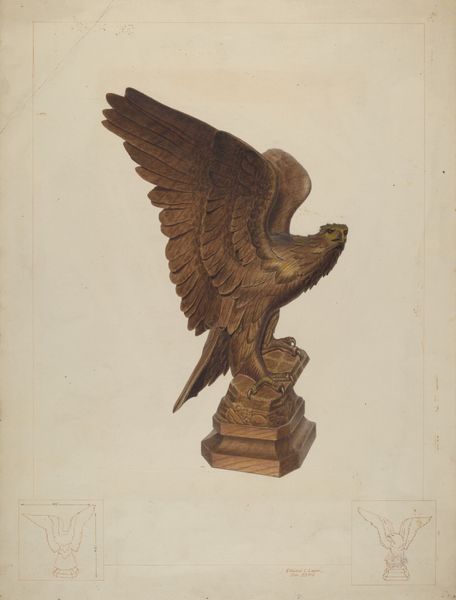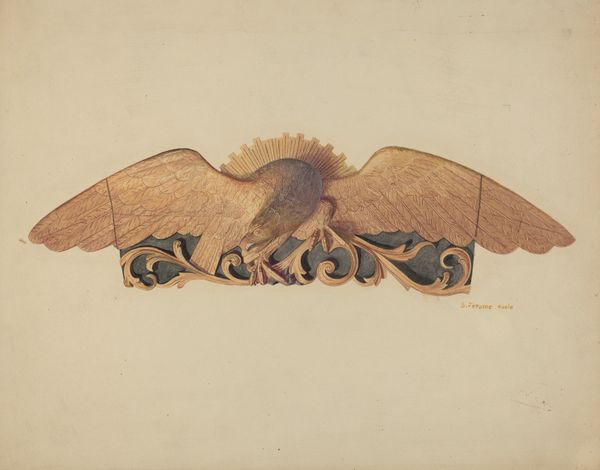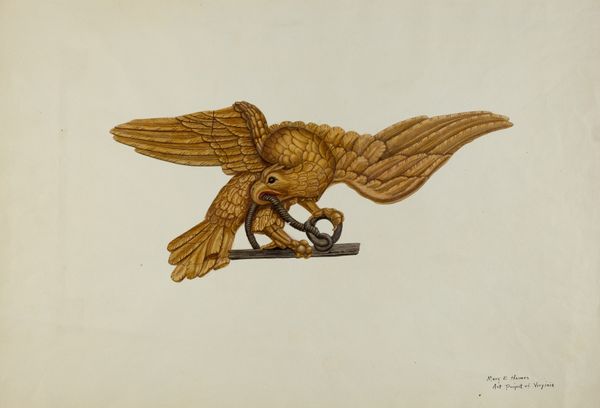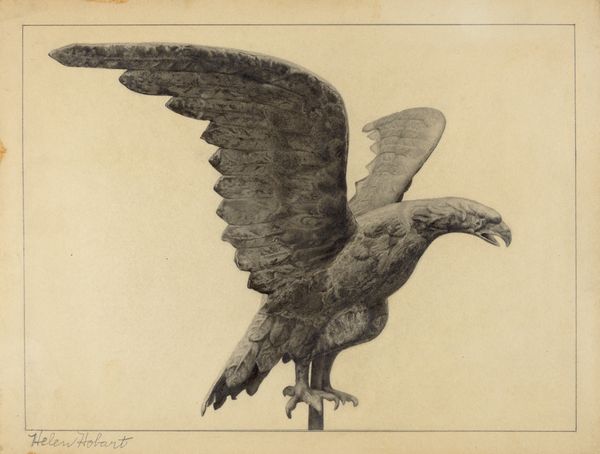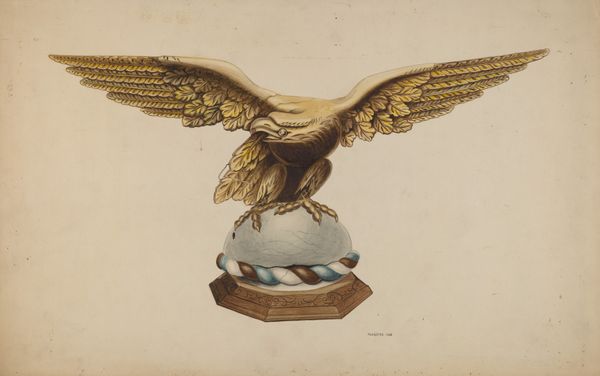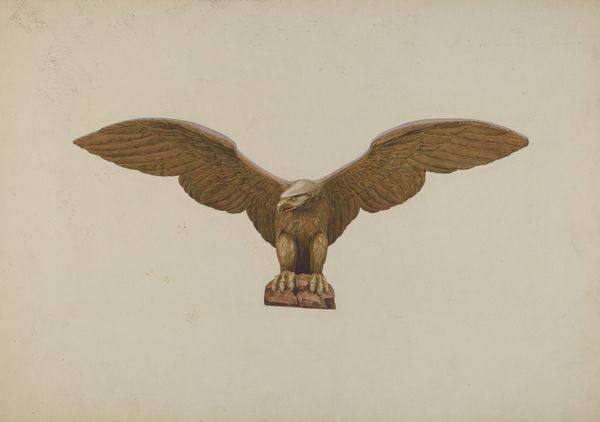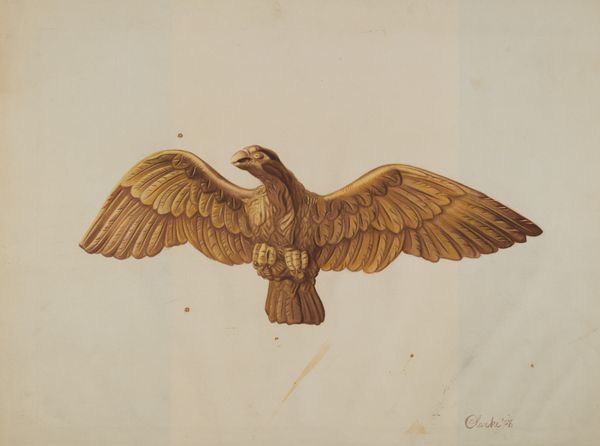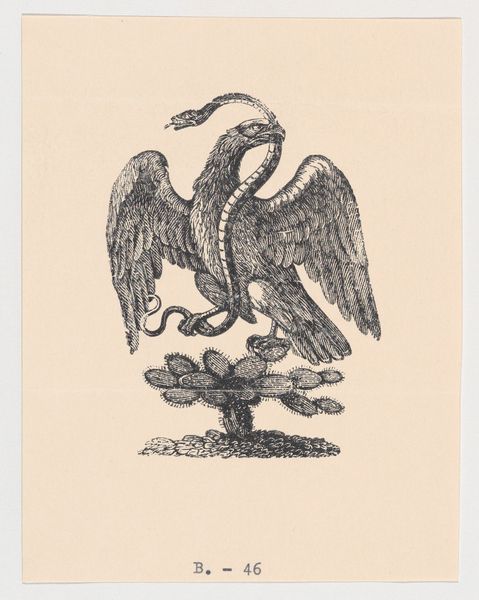
drawing, pencil, graphite
#
portrait
#
pencil drawn
#
drawing
#
pencil sketch
#
charcoal drawing
#
figuration
#
pencil drawing
#
pencil
#
graphite
#
pencil work
#
realism
Dimensions: overall: 34.3 x 48.3 cm (13 1/2 x 19 in.)
Copyright: National Gallery of Art: CC0 1.0
Editor: So, here we have Herman Bader's "Eagle," drawn around 1939. It looks like it's a pencil or graphite drawing. I’m immediately struck by the texture of the feathers—they almost look like they're carved from wood. What do you see in this piece? Curator: You know, when I look at this "Eagle," I'm transported back to a different time. It’s that pre-war feeling, a certain kind of solemnity, a powerful but quiet strength, almost like a whispered promise. Do you feel the weight in those outstretched wings? And those incredible concentric clouds that the bird is sat upon – can they really bear its weight, do you think? Editor: Definitely solemn. It's missing the usual bombast you often see with eagles. The cloud-like form at the bottom – it feels almost restrictive rather than supportive. It almost makes me feel like I'm looking at the bird trapped, instead of flying. Is it my imagination, or are there elements that remain unfinished? Curator: Yes, there's something restrained here. Look at the way the shading stops abruptly along the right edge of the right-side wing, leaving the wingtips somewhat indeterminate. You see a bit of this going on at the end of the left side as well. He isn’t presenting a finished object, so much as the *idea* of an eagle. The lack of harsh lines or grand gestures feels incredibly human, maybe even vulnerable. What is it that you expect to see that this bird is missing? Editor: Hmm, perhaps a sense of movement, the feeling of wind beneath its wings? This pose feels static. It definitely adds to that feeling of…restriction we spoke about before. Curator: Perhaps the dynamism wasn’t his priority. Maybe the very idea of stillness was what concerned Bader at this stage. We do not know for certain what led to the sketch, nor what may or may not have followed on from it, so that it its unfinished state may or may not be representative of the wider artistic intent. What it leaves, however, is room to consider how such powerful forces – an Eagle or, maybe, much grander still, and idea itself - may be restrained, at least for now. Editor: That's fascinating; I hadn't considered that. So instead of a symbol of freedom, it becomes an exploration of restraint? It’s interesting how much a seemingly straightforward image can reveal! Curator: Exactly! And remember, it’s not just about what the artist intended, but what *we* find resonating within ourselves as we stand here before it. Each of us must decide for themselves!
Comments
No comments
Be the first to comment and join the conversation on the ultimate creative platform.
